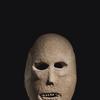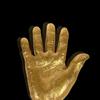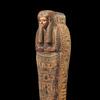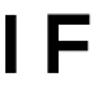Getty Museum Acquires Pastel by Adélaïde Labille-Guiard
- LOS ANGELES, California
- /
- June 17, 2021
The J. Paul Getty Museum has acquired the greatest pastel by Adélaïde Labille-Guiard, one of the leading women artists in 18th-century Europe. The work was purchased at auction at Christie’s in Paris on June 16.
Portrait of Madame Charles Mitoire with Her Children (1783) depicts a fashionably dressed woman with her two young sons. Well-known in Parisian art circles, Madame Mitoire was the granddaughter of Carle Vanloo, a famous artist who had been First Painter to French king Louis XV. Though its composition echoes traditional representations of the Virgin and Child with Saint John the Baptist, the portrait radically signals the modernity of its subject and her approach to motherhood.
“This work is acknowledged as Adélaïde Labille-Guiard’s finest pastel, which she first exhibited in the Paris Salon of 1783, the year of her admission to the Royal Academy of Paintings and Sculpture. A remarkable reflection of Enlightenment enthusiasm for natural motherhood (aristocratic mothers at the time had typically used wet nurses), this work constitutes a significant enhancement to the Getty’s representation of women artists and subjects. The display of this work in the Salon was also a breakthrough moment for women artists more generally, as the academies had historically been male-dominated institutions. For all these reasons we are thrilled to have this touching and beautiful work in our collection, where I am sure it will become the subject of much attention and be accessible to scholars,” says Timothy Potts, Maria Hummer-Tuttle and Robert Tuttle Director of the J. Paul Getty Museum.
This large and beautifully preserved work speaks to emerging views of motherhood and familial bonds. A vogue for maternal breastfeeding swept Europe in the late 18th century, spurred by Enlightenment writers like Jean Jacques Rousseau, who decried the common practice of rich parents sending their newborns to wet nurses. Though it was not the first French portrait depicting a well-to-do mother breastfeeding, Portrait of Madame Charles Mitoire was quite unlike anything that visitors to the Paris Salon of 1783, where the pastel was first exhibited, had ever seen: a formal portrait of a named sitter openly nursing her child.
Applying pastels both wet, with a brush, and dry, with a stick, Labille-Guiard captured her sitters’ likenesses and the draperies with astonishing naturalism and vitality. She lavished no less attention on the composition’s still-life elements: the flowers in Mitoire’s hair, a glass of red wine, and its glowing shadow on the table beside her. This portrait was one of 11 with which the artist made her Salon debut in 1783 as a newly minted member of the Académie Royale.
“In addition to its exquisite beauty, this new acquisition offers insight into social and intellectual changes unfolding at a key moment in European history,” explains Emily Beeny, Associate Curator of Drawings at the Getty Museum. “A transformative addition to the collection, this pastel allows our visitors to explore the tangled relationship between women’s professional ambitions and the emergence of modern domesticity in the period.”
Portrait of Madame Charles Mitoire with Her Children (1783) is the second work by Labille-Guiard to enter the Getty’s collection. It joins another pastel by the artist, Head of a Young Woman (1779) that was purchased in 1996.
The newly acquired pastel will be put on view for visitors as soon as practicably possible after its arrival in Los Angeles.
Watch an interview with Emily Beeny about the acquisition here
Labille-Guiard (1749–1803) was one of the most distinguished female artists in eighteenth-century Europe—and a virtuoso pastellist. She is remembered chiefly for her portraits of Parisian art world and theatrical celebrities and as the head of an important teaching studio for women. Born Adélaïde Labille, she received her early training in the studio of the miniaturist François-Elie Vincent before joining the Académie de Saint-Luc (the Parisian painters’ guild) and marrying a financial clerk, Louis-Nicolas Guiard, in 1769. Though the marriage would last only a decade, she would be known ever after as Madame Labille-Guiard. In the early 1770s, she may have studied pastel technique with Maurice-Quentin de La Tour, the greatest practitioner of the medium at the time, whose stylistic influence on her strongest work was noted by several contemporary critics. By 1774 she was exhibiting pastels at the Académie de Saint-Luc, and, by 1782, at the Salon de la Correspondance . After further training in oil technique with her childhood friend and future husband François André Vincent (the son of her original teacher), she was accepted into the Académie Royale de Peinture et de Sculpture in 1783—an unusual honor for a female artist, bestowed in that year on both Labille-Guiard and her colleague Élisabeth Louise Vigée Lebrun. For her Salon debut, also in 1783, Labille-Guiard exhibited some 10 portraits in pastel, as well as a self-portrait in oils (now in the Metropolitan Museum of Art, New York) that shows her teaching two students: a rare depiction of professional art instruction for women in this era.


270x400_c.jpg)




_Infinity_by_Santiago_Medina_PhotoCr100x100_c.jpg)











